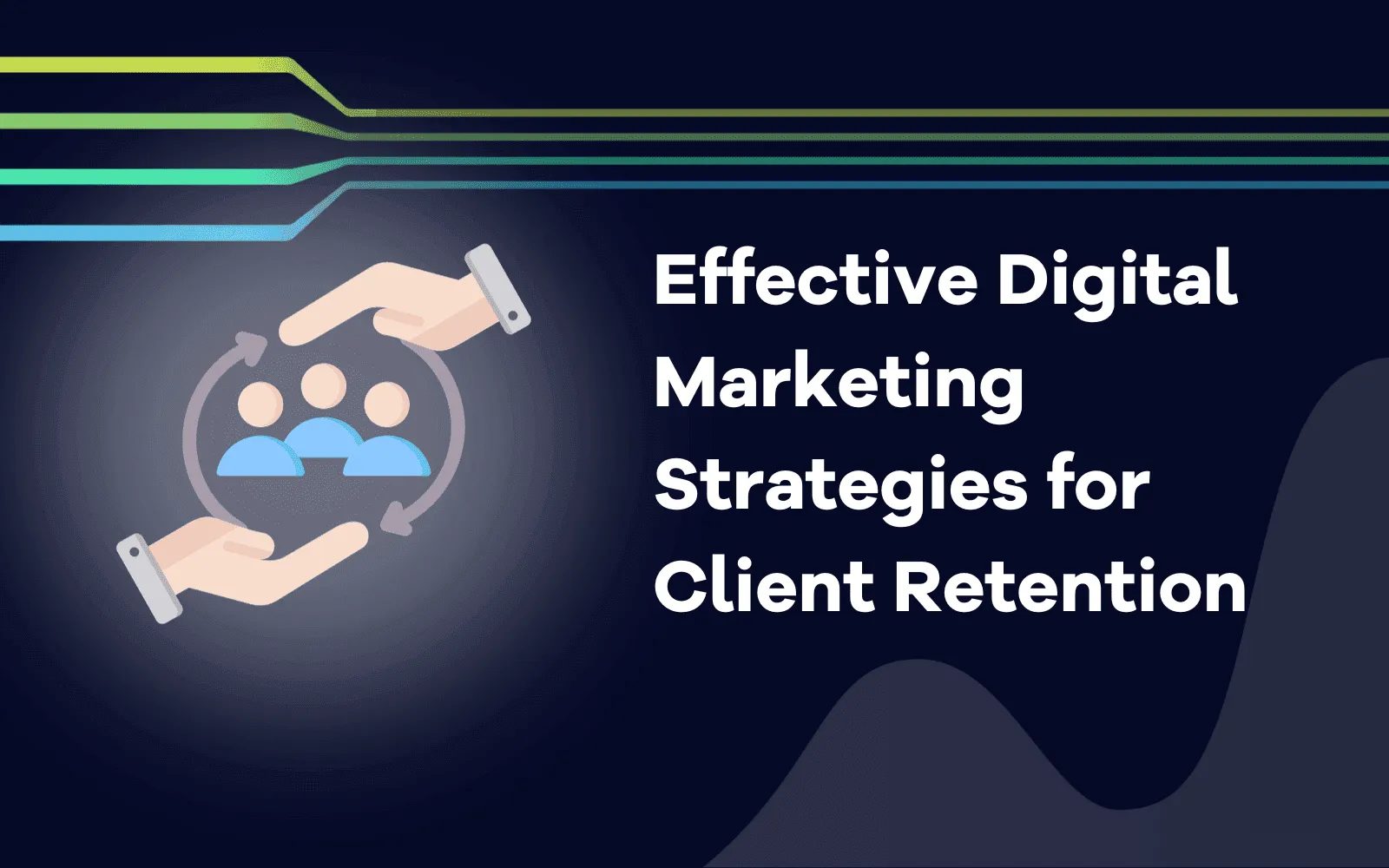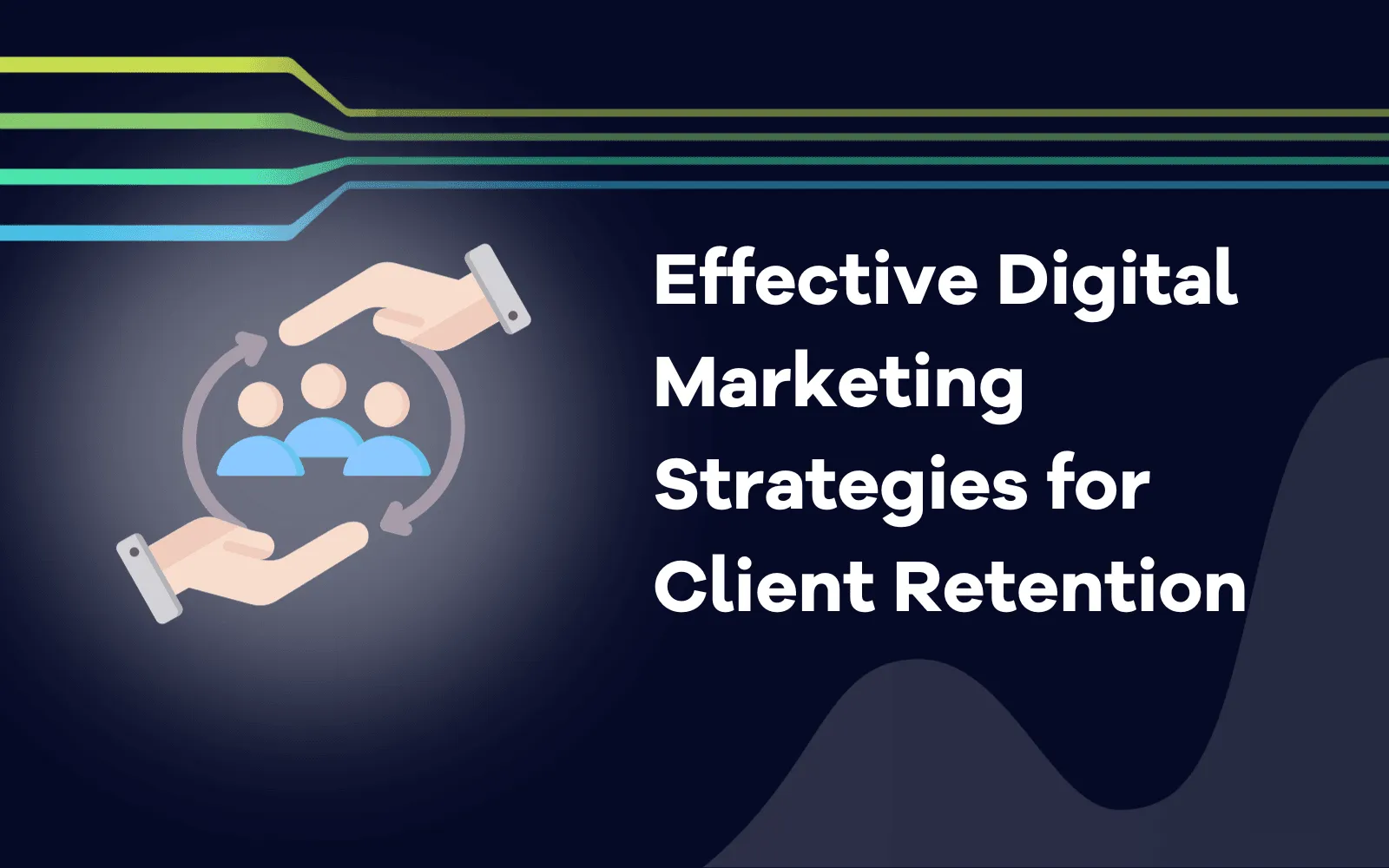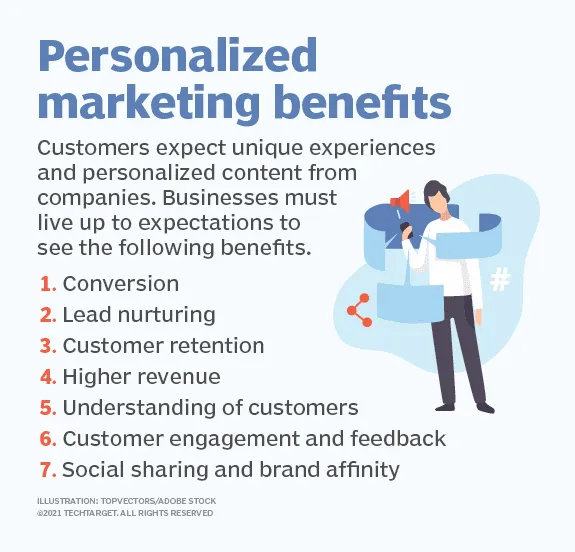
Effective Digital Marketing Strategies for Client Retention
November 15, 2023
Discover proven digital marketing strategies to enhance client retention. Explore effective tactics to build lasting customer relationships and boost loyalty in the online landscape.

Many marketers focus on bringing new customers in. But smart marketers put most of their effort into keeping the customers they already have coming back.
A lot of research proves that it costs more to bring in new customers than it does to retain the ones you have. In addition, studies show that existing customers are responsible for more of the profit a company generates.
Therefore, it’s essential to focus on current customers in your digital marketing as much, if not more, than you do new customers. Strengthening these relationships will result in more conversions that ultimately drive business success.
Use these digital marketing techniques to keep customers and turn them into loyal brand advocates.
Create and market a loyalty program
Customers often need more than quality products and good customer service to return to your business. A loyalty program convinces customers to make repeat purchases because they’re rewarded for doing so.
The first step is creating the program. What kind of rewards do your customers want? How do they accumulate these rewards? How can they cash in on them? Where do they access their rewards?
You can create an entirely online loyalty program using loyalty program software.
Marketing your loyalty program is the next important step. Your customers won’t know your loyalty program exists if you don’t tell them about it.
We’ll talk more about this later in the article, but use your customer data to figure out which digital marketing channels your existing customers use the most and what kind of content they interact with. Then, you’ll publish content about your loyalty program on the channels they frequent the most to spread the word and boost signups.
Customers will come back if you give them a reason. Start with a loyalty program you market relentlessly to convince customers to become devoted to your business.

Source: Smith.ai
Implement an after-purchase email marketing campaign
What happens when a customer purchases something from your business? If you’re only sending an initial “thank you for your purchase” email and letting your customer ride it out on their own until their product comes, you’re approaching the after-purchase experience wrong.
The communication you have with a customer after they make a purchase, up until they receive their product, is crucial for retention. Letting them know what they can expect every step of the way helps customers feel like more than a sale.
An after-purchase email marketing campaign starts the existing customer experience with your business off on the right foot.
How to create an after-purchase email marketing campaign
First, specify approximately how long it takes for customers to receive your products. This is how long your after-purchase email marketing campaign should be.
For example, if it normally takes one and a half weeks for a customer to receive a product, you want your emails to be spread across that timeframe.
Next, decide how many emails are appropriate for the campaign. Following the example above, sending an email daily for a week and a half would probably annoy your customer. Instead, only send them emails at important milestones in the after-purchase journey.
Your first email should come right after they make the purchase. Send the customer a personalized thank you note for their purchase.
It will help them feel special and ignite their desire to come back to your brand. You can also slip in subtle advertisements of your other products or services to keep your business at the top of the customer's mind.
Keep your thank you note simple and send the customer any other information they need to keep track of their purchase.
Send the next email in your campaign when the product ships. Give the customer their tracking number and simple instructions for staying on top of their package.
After that comes an email when the product is delivered. Ask your customer to confirm they received their package. Let them know what to do if they don’t receive it. You could also send them a link to a blog post or video that will help them use their product better.
Then, end your email campaign with a customer satisfaction survey.
Send out customer satisfaction surveys
You can improve your client retention efforts when you know what’s stopping your customers from being satisfied. Getting your customers to fill out customer satisfaction surveys is helpful in this regard.
Send your survey in the final email of your after-purchase email marketing campaign. It should come 3-5 days after your customer receives their product so that they have a chance to fully use it.
Start the email thanking them again for buying something from your business. Let the customer know they can reach out to you with any questions or concerns and how to do so.
Then, lead into the survey. Ask that they take the survey if they have time to help you improve the customer experience. Tell them how long it is, how to take it, and clearly highlight the link to your survey.
A discount code or coupon for money off their next purchase for taking the survey could be a good incentive.
But don’t be pushy about taking your survey. At the end of the day, you can’t control whether your customers take your survey. You can only guide them to it with a kind request and motivating incentive.
Take advantage of abandoned cart campaigns too
Aside from your after-purchase email marketing campaign, an abandoned cart campaign can also help your customer retention efforts.
If customers enjoyed their first purchase with your business, they’ll circle back around to your website for another look through your catalog, throwing products they like into their carts.
However, many of those customers will end up leaving their carts without completing their purchase. They could be waiting for payday. Something could’ve unexpectedly taken their attention away from shopping.
Whatever the reason, the person has at least shown interest in your products again. Don’t give up on that. Use an abandoned cart email campaign to remind them of what they were doing and re-inspire them to make another purchase.
Set it up so an email is automatically sent to an existing customer every time they abandon their cart. Show them what they left in their cart and talk about what they’re missing out on by not completing the purchase.
Also, include a personal discount code they can use to get a small percentage off the abandoned cart purchase.
A customer can abandon a cart. But you can ensure they don’t forget about it with an automated abandoned cart email campaign.

Source: techtarget.com
Create Marketing Campaigns Tailored to Existing Customers
A loyalty program and effective use of email campaigns will make a difference in your customer retention efforts. However, honing in on personalized marketing campaigns and content on your other digital marketing channels must be at the core of client retention.
Consistently pushing out tailored content and campaigns helps customers feel like you’ve taken the time to get to know them and what they need. As a result, they’ll be more entitled to keep doing business with you rather than a competitor who knows nothing about them.
Also, existing customers are consuming content just as much as potential customers. Capitalize on this with campaigns that speak directly to people who’ve already made a purchase and have the highest potential to make another.
Your first step is leveraging customer data to learn how to best retain clients through content and marketing techniques. You can’t make a marketing campaign for someone if you don’t know who they are, how they think, and how they behave.
Use your various data sources to analyze the following about existing customers:
Their journey with your business
Customer behavior patterns
Demographics
Content preferences
Most frequented marketing channels
Messaging they respond to
Your various data sources include:
Website analytics
Customer satisfaction surveys
Data from polls on social media
Email marketing analytics tools
Customer service interactions
Personal conversations you’ve had with customers
Information from community forums your customers use
Built-in analytics tools on your social media platforms
Armed with information from these customer data sources, you can start creating personalized marketing campaigns to maximize retention rates.
How to put together a personalized marketing campaign
Defining a strategy for your personalized marketing campaign is the first step in the process. Document the following details to create a doable plan for your campaign:
The goals for your campaign (i.e., get more loyalty program signups, get more sales for a new product)
The metrics you’ll use to track progress toward your goals
Which marketing channel you use for this campaign
What kind of content you’ll create for the campaign, and how often you’ll publish it
The main message you’re pushing with this particular campaign
Specific calls-to-action you’ll use at the end of each piece of content
The timeline for getting each aspect of your campaign done
Once you get the details of your campaign down, it’s time to execute your plan based on your timeline. Delegate tasks to your team. Ensure everyone has access to the project management software you use to organize the project details.
Finally, keep track of your campaign performance. Dig into whether or not it’s getting results by looking at the metrics you assigned to your goals. Adjust your content, channels, or other campaign details based on your learning.
The better the content you create for existing customers and the more time you spend developing these relationships through personalized campaigns, the easier it will be for them to become loyal customers and brand advocates.
Conclusion
Returning customers are the heart of your company’s success. Without them, you’ll have to spend a lot of money, time, and effort constantly attracting new clients. Focus on customer retention in your marketing, and you’ll make more money without spreading yourself and your team thin.
Related blog posts

5 LLM Visibility Metrics You Should Track in 2026
SEO is now both about ranking in search engines and being visible in LLMs. We give you five visibility metrics every SEO should track in 2026.
3 December 2025Is LLM Tracking Relevant for You?
LLM tracking is not just for SEOs. It is also relevant for content teams, agencies, marketing leadership, and communication teams. Learn why here.
26 November 2025
How to Find the Best Prompts to Track for AI Visibility
Do you want to start tracking prompts to optimize your AI visibility? We give you seven practical ways to identify relevant prompts to track in LLMs.
9 November 2025
